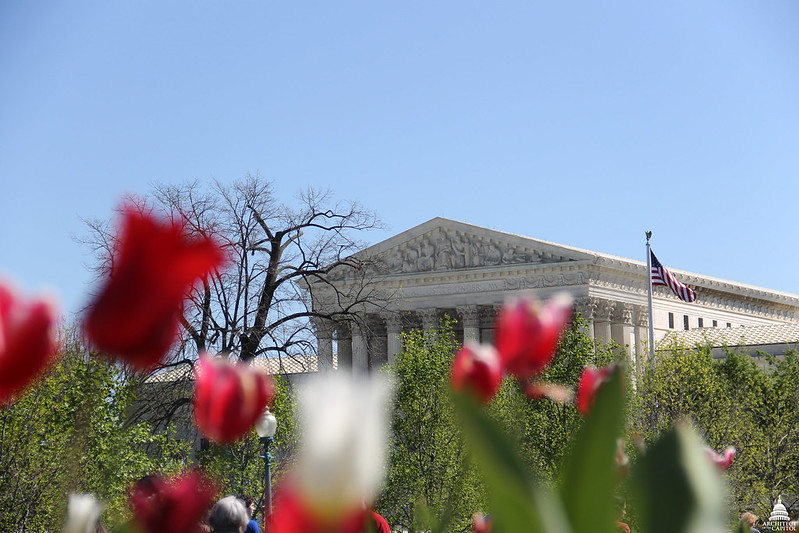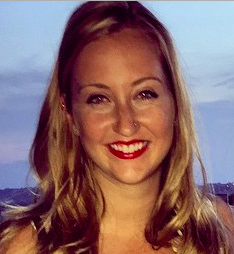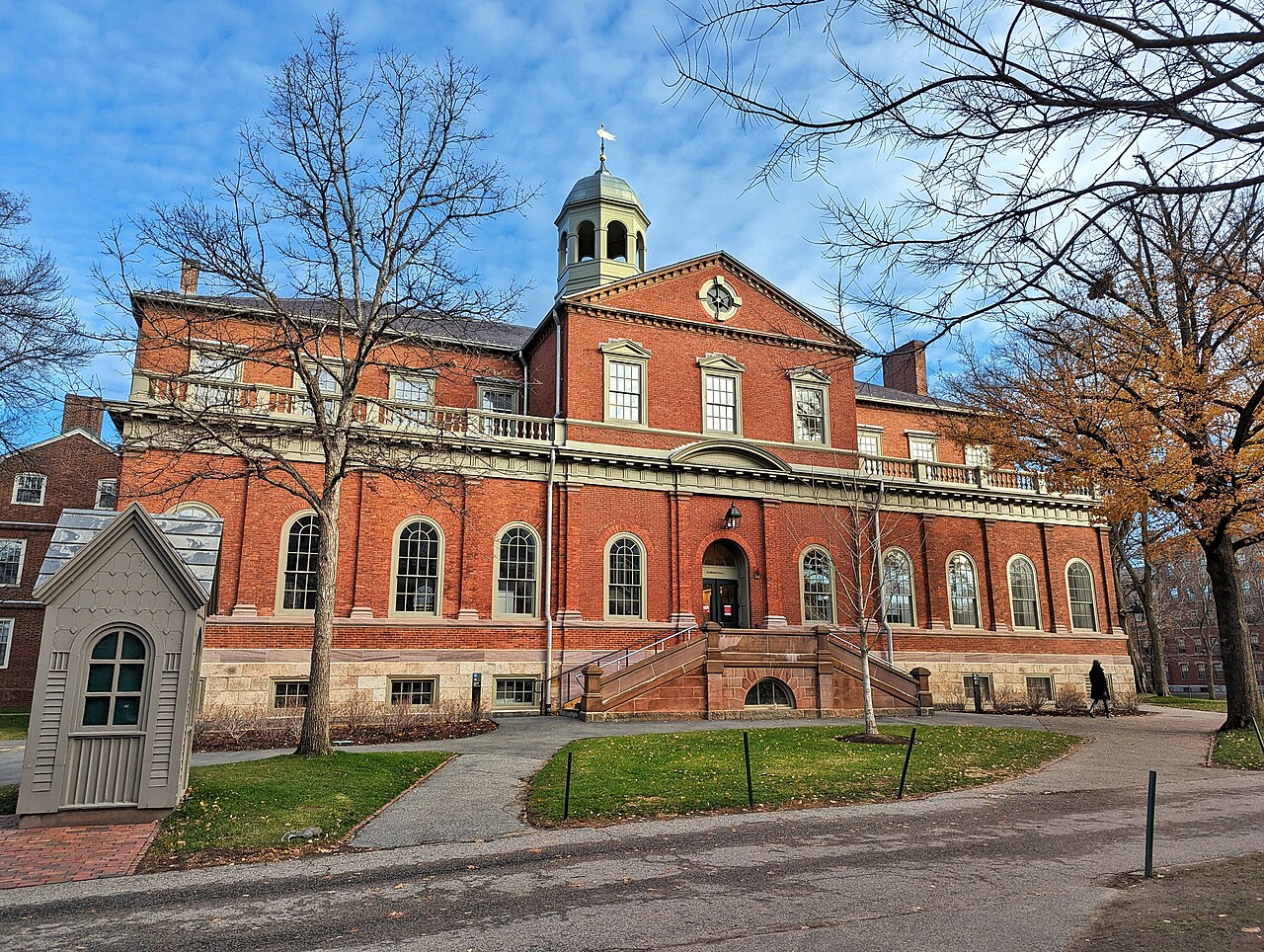The Supreme Court’s Coronavirus Postponement: Pandemics, Precedent and National Risks
The Supreme Court cites past examples to justify its decision to postpone oral arguments. But those past postponements were different in key ways.

Published by The Lawfare Institute
in Cooperation With

Salus populi suprema lex esto. The health of the people should be the supreme law—or so said Cicero. And, evidently, so did the Gazette of the United States, an early American newspaper, as yellow fever raged through Philadelphia in the summer of 1798. In a piece for the Gazette, a health official for the city of Philadelphia recommended measures for dealing with yellow fever that will sound familiar:
- Self-isolate (“The interest and will of the Society ... is sufficient to justify, the peaceable removal of every individual or family, in which a contagious disease of a malignant kind makes its first appearance, to such distance from the city as will prevent all danger of its being communicated[.]”)
- Make every hospital bed available (“Let a sufficient number of buildings with separate apartments after the manner of the wards of an [sic] hospital … be provided for the reception of the sick[.]”)
- Take care of others (“[F]or alas! Humanity itself ceases when compassion to another would be fatal to ourselves.”)
Perhaps one or two may sound less familiar:
- Get some country air? (“[F]or it is a known fact, however singular and extraordinary it may appear, that the yellow fever is very seldom contagious in the air of the country[.]”)
- Wait for winter? (“hard frost, which is now known to be a perfect antidote to the contagion”)
It is hard not to note the similarities between the current coronavirus pandemic and pandemics of the past. The Supreme Court couldn’t resist this temptation, either.
As public alarm grew over the coronavirus outbreak, the Supreme Court decided to postpone all oral arguments and “examine options for rescheduling … in light of the developing circumstances.”
And, as it is prone to do, the court cited the relevant precedents. It noted in its announcement that the court had postponed arguments at least three times before: in October 1918 in response to the Spanish flu epidemic, and twice in the 1790s in response to yellow fever outbreaks.
But a deeper investigation reveals that past postponements did not delay Supreme Court cases of extraordinary national importance. The cases that were delayed in previous pandemics did not have direct bearing on American national security or presidential elections. And the court even resolved postponed cases in a timely manner.
The current situation may be different. The coronavirus outbreak could keep the justices at home for months, even as the government considers extraordinary measures in response to the pandemic that could test legal limits, and even as time-sensitive cases concerning the president’s financial records remain unresolved.
Yellow Fever in the 1790s
Two of the court’s prior postponements took place in the 1790s, when the six-justice body lacked the grandeur, ritual and centrality to American jurisprudence that characterize today’s court. Back then, Supreme Court justices practiced “circuit riding,” requiring them to undertake strenuous travel to designated meeting places to hear cases alongside district court judges. From 1791 until 1800, the Supreme Court convened in Philadelphia, where the summer heat could be excruciating and outbreaks of yellow fever were common. For these reasons, as Charles Warren notes in “The First Decade of the Supreme Court of the United States,” the Supreme Court sat for just two to three days in August most years.
The Supreme Court’s coronavirus announcement notes that cases were postponed in 1793, when a yellow fever outbreak made Philadelphia unsafe. It’s hard to argue with that characterization: By the end of August of that year, between 140 and 325 people were infected in Philadelphia; by October, more than two thousand Philadephians had died.
But it’s not clear that any cases of national importance were before the court at the time. J. Alexander Dallas, the first reporter of the Supreme Court, had this to say about postponement in August 1793: “The Malignant Fever which, during this year raged in Philadelphia ... interrupted, likewise, the business of the Courts; and I cannot trace that any important cause was agitated during the present Term.” In other words: No critical cases were on the docket.
The court also cited its 1798 decision to postpone cases, which included United States v. Bache. Bache, the grandson of Benjamin Franklin, ran a magazine in Philadelphia in which he regularly published scathing condemnations of George Washington. Concerned that Bache’s magazine would turn public opinion, a federal district judge issued a warrant to arrest Bache for “libelling the President and the Executive Government, in a manner tending to excite sedition[.]” Because he had not violated a criminal statute (the Alien and Sedition Acts would pass only later that year), Bache was formally charged with the common law crime of seditious libel. The Supreme Court was prepared to hear Bache’s case, in order to determine whether a federal court had jurisdiction over common law crimes (Bache had failed to persuade a judge at a lower court that such offenses were beyond federal jurisdiction). But just before the case could be heard, the court abandoned its schedule and left town. Not long after it did so, Bacche contracted the disease and died—rendering his case moot.
While it decided some notable cases in the 1790s, the court had not yet evolved into the central fixture of American jurisprudence that it would over time become. Marbury v. Madison, after all, did not come down until 1803. One justice even admitted the court’s work wasn’t always essential. In 1792, Justice John Jay decided to leave the court before the end of the term. This was in part to be with his wife, who was expecting, and in part because “no Business of particular Importance either to the Public, or to Individuals, made it necessary” for him to stay.
The 1918 Spanish Flu
By the early 1910s, the court had long since abandoned circuit riding. And it had moved to Washington, D.C., where it heard cases in a chamber of the U.S. Capitol building that previously belonged to the Senate. In October 1918, as the Spanish flu tore through the country and some 30,000 residents of Washington, D.C., fell ill, the court postponed arguments by about a month: “We have been adjourned on account of the epidemic as it was not thought right to require lawyers to come ... to a crowded and infected spot,” Justice Oliver Wendell Holmes wrote to a colleague.
But the one-month delay did not ultimately cause any significant problems for the court’s business. The court simply added a few argument days in November to compensate for what it had missed in October. By November, the Spanish flu had begun to die down.
The Coronavirus Postponement
The court’s 2020 postponement differs from the Spanish flu and yellow fever postponements in a few key respects. Unlike in the 1790s, the court now plays an essential role in the life of American democracy. And while the 1918 court could resume business after just one month, the coronavirus pandemic may last much longer: President Trump has said that the United States may be navigating the disruptions caused by the virus until August, and some experts have suggested the Americans may need to practice social distancing for a year or more. What’s more, unlike in 1918, this delay comes toward the end of the court’s argument cycle, not at its beginning, making it potentially harder to get back on track by adding argument days within the term. The duration and timing of the court’s recess may have critical implications—to wit, that the court may not have time to resolve cases involving President Trump’s financial records before voters head to the polls in November.
Moreover, it’s possible that the Supreme Court will be called upon in the current national crisis to provide legal guidance as to how it may be handled. Famously, during the Korean War in 1952, President Truman tried to nationalize the country’s steel mills, because a strike threatened to shut down production the government viewed as essential for the war effort. The Supreme Court heard Youngstown Sheet & Tube Co. v. Sawyer, in which it ruled that the president had exceeded his authority in making the order. As the coronavirus pandemic becomes a national emergency, the government may resort to extraordinary measures. Analysts have discussed whether and under what circumstances the president would have legal authority to order the military to enforce laws or otherwise support the nation’s domestic response to the pandemic. Such measures, if taken, could prompt urgent litigation: How will the court handle such questions, if a case emerges while it is not hearing arguments?
But unlike prior courts that dealt with outbreaks, today’s court has a potential solution: teleconferencing. The Department of Justice has recently asked Congress to remove the requirement to obtain a defendant’s consent to use teleconferencing for arraignments, initial appearances, and other preliminary hearings not currently authorized to be heard over video. True, teleconferencing can have drawbacks for certain court proceedings. But the drawbacks of teleconferencing are most glaring at the trial court level, not at the Supreme Court. Trial court judges must make quick judgments on the admissibility of evidence, and jurors need to be able to observe witnesses to make informed judgments about their credibility. The Sixth Amendment also provides defendants with the right to confront their accusers. In New Mexico v. Thomas, the New Mexico Supreme Court held that using videoconferencing for certain proceedings violates that right. Even so, the use of videoconferencing technology has continued in other courts, including district courts.
But the Supreme Court does not hear witness testimony, hold jury trials or require justices to make snap judgements about the admissibility of evidence. While a virtual environment might still pose some challenges—especially for justices less familiar with the technology—the court could still hear oral arguments through video linkage and even allow public participation as necessary. Several other federal courts, both district and appellate, have already begun to do so.
The court has another option too. No statute requires that the Supreme Court hear oral arguments before arriving at decisions. The justices could proceed on the basis of briefing materials alone. While such a strategy breaks with precedent, it would allow the court to render judgments on schedule. The court might understandably prefer not to resolve contentious cases without oral argument. But the justices could start by identifying cases on which they can reach a unanimous opinion after reading the briefing materials. They could resolve those cases now and free up time to address the more challenging cases when oral arguments resume.
The Supreme Court managed to postpone arguments in the past without sacrificing much, but this postponement presents greater risks. In an election year, the court could provide clarity on central questions concerning the president’s tax returns and associated matters.
In a crisis that could last many months, the court should articulate to the public how it plans to handle emergency litigation, should it arise. As the rest of us learn to teleconference, and to work remotely, the court should be prepared to do so as well.






